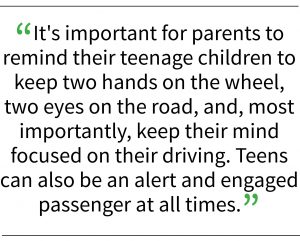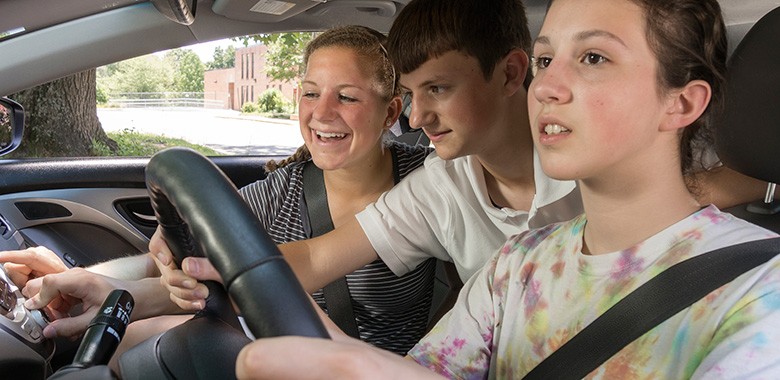Each year, eight large yellow school buses could be filled with the number of teens we lose to preventable car crashes in California alone
Editorial is the opinion of Morgan Hill Life
It only takes a moment of distraction while driving to lead to the tragic death of a friend, beloved family member or stranger.
 Let’s remember Natalia Salcido. Because of a split second moment of distraction while driving, the vibrant Christopher High School student died May 9, 2015, a week shy of her 16th birthday and the night before Mother’s Day. That tragic night nearly six years ago, she was in a car with two of her friends on Miller Avenue in Gilroy. The teenager at the wheel had a provisional driver’s license and was not legally allowed to have other teen passengers in the vehicle.
Let’s remember Natalia Salcido. Because of a split second moment of distraction while driving, the vibrant Christopher High School student died May 9, 2015, a week shy of her 16th birthday and the night before Mother’s Day. That tragic night nearly six years ago, she was in a car with two of her friends on Miller Avenue in Gilroy. The teenager at the wheel had a provisional driver’s license and was not legally allowed to have other teen passengers in the vehicle.
The car was going 73 miles per hour in a 35 mile per hour zone. The driver turned back briefly to see another passenger’s Snapchat video. During that moment of distraction, the road curved and the car crashed into a tree, killing Natalia. Drugs or alcohol were not factors in the crash. All three passengers wore seatbelts.
Later that evening Natalia’s father, San Jose Fire Capt. Chris Salcido, rushed into the hospital room at Regional Medical Center in San Jose. His daughter’s body lay in bed, fully covered with a sheet. The family had been preparing a surprise Sweet 16 party for her. Instead of enjoying the planned celebration, they shared their grief over her lost life from a reckless driving crash.
 Salcido, his wife, Andora, and their daughter Noelle have shared the painful story of how Natalia’s death has forever impacted their family. They have talked with students and parents at local high schools as part of the teen-driver education program “Every 15 Minutes.” The program is organized by the California Highway Patrol and intends to help teens understand the potential deadly consequences of drinking and driving or distracted driving.
Salcido, his wife, Andora, and their daughter Noelle have shared the painful story of how Natalia’s death has forever impacted their family. They have talked with students and parents at local high schools as part of the teen-driver education program “Every 15 Minutes.” The program is organized by the California Highway Patrol and intends to help teens understand the potential deadly consequences of drinking and driving or distracted driving.
April is Distracted Driving Awareness Month. The Gilroy and Morgan Hill police departments joined law enforcement agencies nationwide April 8 through 12 this year to remind drivers about the dangers and consequences of texting and distracted driving. This annual campaign is part of the U.S. Department of Transportation’s National Highway Traffic Safety Administration’s (NHTSA) national U Drive. U Text. U Pay. high-visibility enforcement effort.
 The goal is to educate all drivers on the importance of driving free of distractions, as well as cracking down on drivers who violate the hands-free cell phone law. The hope is that a combination of education and enforcement will encourage motorists to change bad behaviors for the better.
The goal is to educate all drivers on the importance of driving free of distractions, as well as cracking down on drivers who violate the hands-free cell phone law. The hope is that a combination of education and enforcement will encourage motorists to change bad behaviors for the better.
Each year, eight large yellow school buses could be filled with the number of teens we lose to preventable car crashes in California alone, according to Impact Teen Drivers Executive Director Dr. Kelly Browning. This time of year when high school proms and graduations take place can be especially hazardous. Many students are getting a taste of independence. Unfortunately, they might not be mature enough to be responsible drivers with that freedom. Parents need to emphasize to them that a car can kill.
It’s important for parents to remind their teenage children to keep two hands on the wheel, two eyes on the road, and, most importantly, keep their mind focused on their driving. Teens can also remember to be an alert and engaged passenger at all times. About 50 percent of the teen driving fatalities are passengers being driven by another teen driver.
The statistics are sobering. According to the NHTSA, between 2012 and 2019, 26,004 people died in crashes involving a distracted driver. While fatalities from motor-vehicle crashes decreased slightly from 2018, distraction-related fatalities increased by 10 percent. NHTSA also reported that the number of deaths linked to driver distraction was 3,142 nationwide, or almost 9 percent of all fatalities in 2019. This represents a 10 percent increase over the year 2018, or 284 more fatalities.
Millennials and Gen Z are the most distracted drivers, often using their cell phones to talk, text, and scroll through social media while behind the wheel. According to NHTSA research from 2017, young drivers 16 to 24 years of age have been observed using handheld electronic devices while driving at higher rates than older drivers since 2007. In 2019, 9 percent of people killed in teen (15-19) driving crashes died when the teen drivers were distracted at the time of the crash.
Driving is a responsibility not to be taken lightly. When you’re behind the wheel, avoid distractions and keep your focus on arriving at your destination safely.







